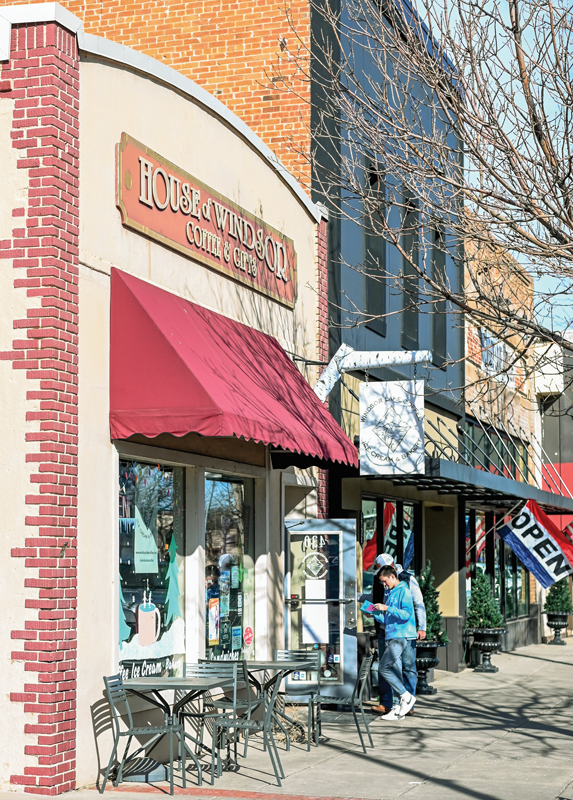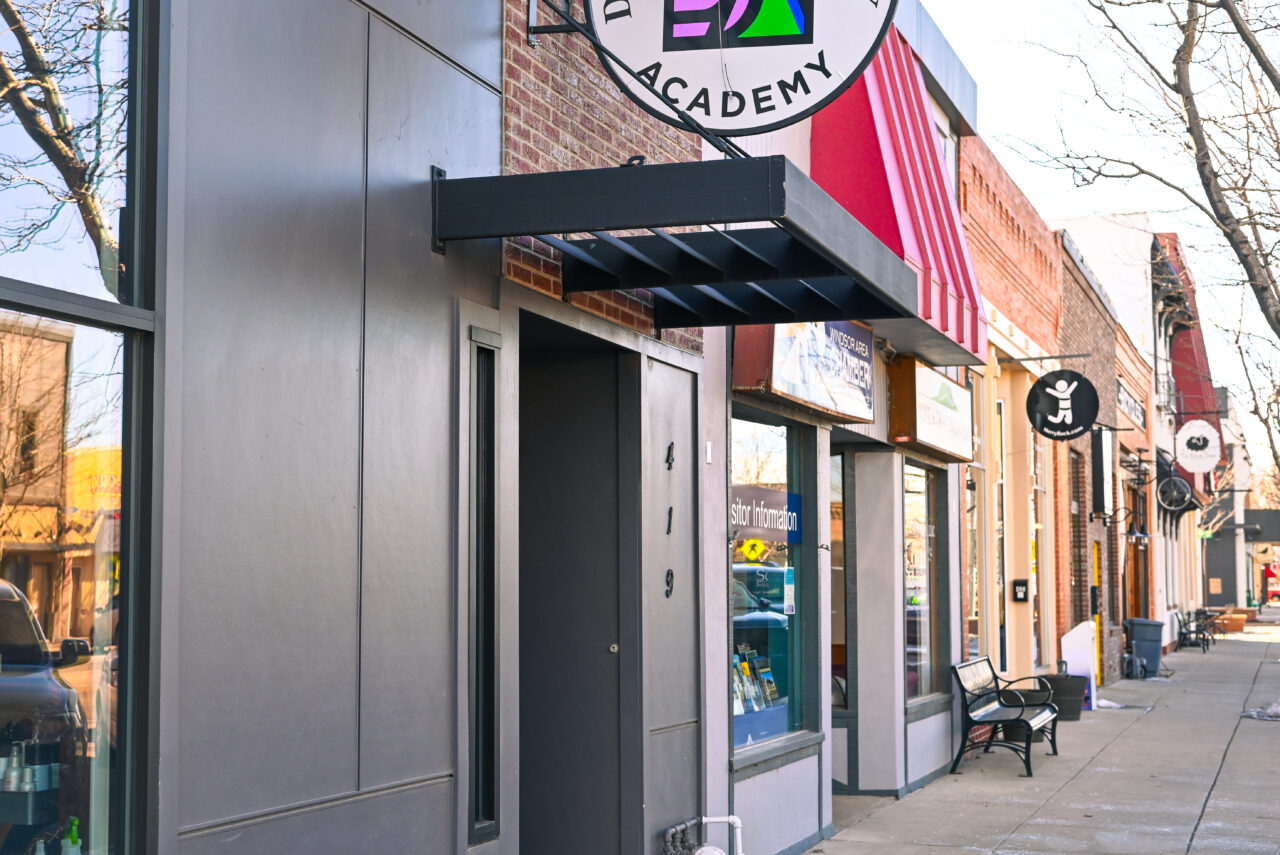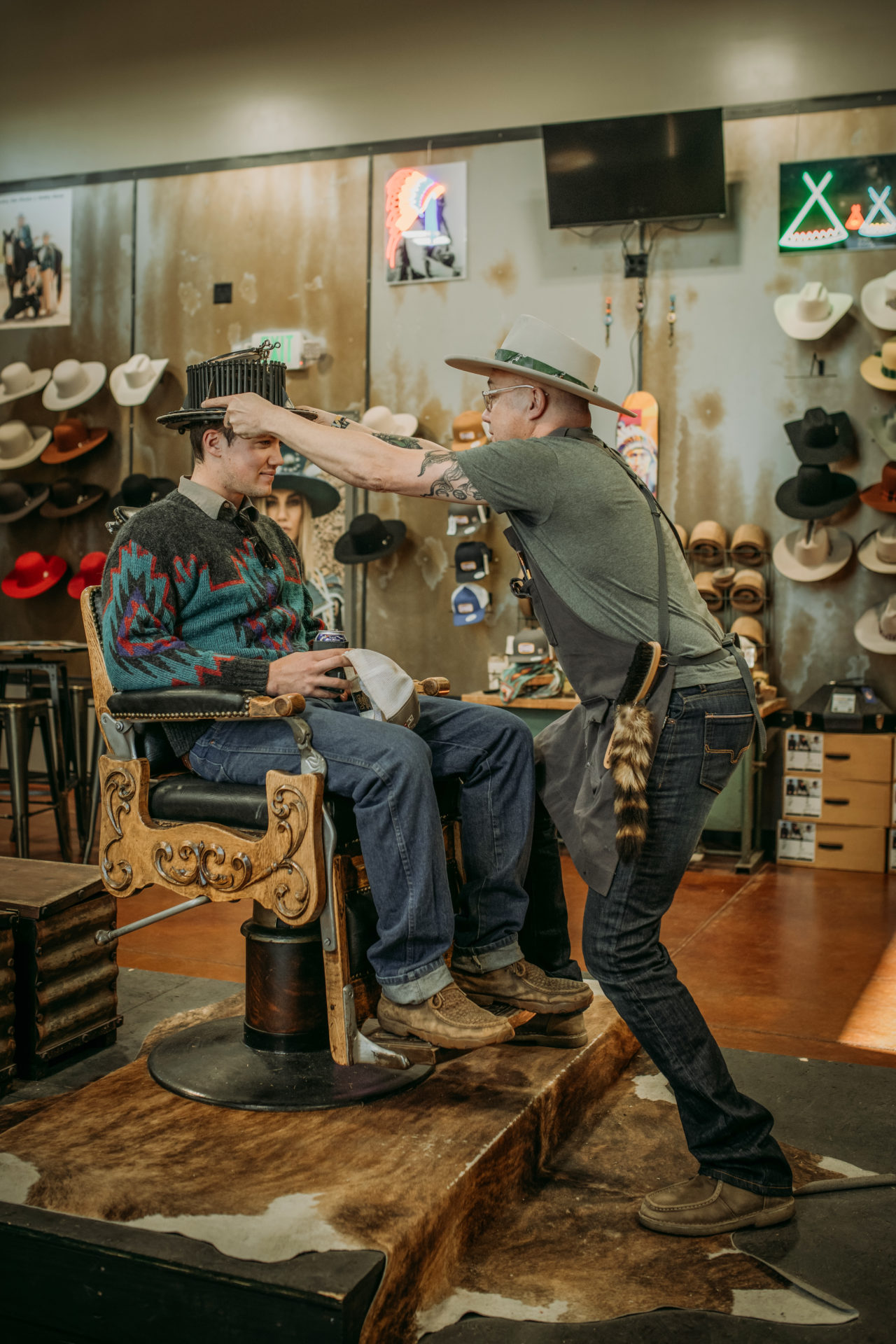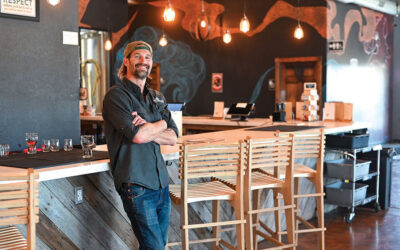Paul Rennemeyer used to do a little show from his back porch in Windsor whenever he’d have guests from Denver. He’d open his door and ask them, “Hear that?”
If they didn’t already know the punchline—he did this a lot—they would ask, “Hear what?”
“Exactly,” Rennemeyer would answer.
A lot has changed since Rennemeyer first moved to Windsor. He and his wife, Brandi, had an infant, and they were looking to escape the mega-suburban feel of Highlands Ranch. Brandi grew up in Greeley, and when she suggested Northern Colorado, he remembered selling insurance in Windsor in the early 2000s, just as Safeway and King Soopers were moving in, and he thought to himself that he could live there. When he arrived, Windsor had about 15,000 people.
Now they have three kids, and that infant is 16 years old. Rennemeyer’s now Mayor of Windsor, a title he’s held for seven years. And Windsor has an estimated 43,000 people. It’s grown so fast that the Town Manager, Shane Hale, says those who have lived there for just a decade probably feel like grizzled veterans.
Even when growth is generally the goal for people such as the mayor and the town manager, both Rennemeyer and Hale lament a bit about just how fast Windsor exploded. Getting to 40,000 would have been fine, even welcome eventually, they say, but nearly tripling in size in a decade? Rennemeyer misses his quiet porch.
“I would have preferred that we hadn’t grown as fast as we have,” he says.

Downtown Windsor – Photo by Jordan Secher
If you’re wondering why Rennemeyer didn’t put a stop to it, well, it’s not that simple. Once a town zones an area for homes and apartments, and a developer has the money to provide the infrastructure to support them, they get built, unless the town wants to fight them and risk a lawsuit for disturbing private property rights in a state that’s historically protected them.
Windsor had several residential areas planned for the future. This isn’t uncommon, as cities typically have a comprehensive plan filled out with ideal spots for residential neighborhoods, retail centers and industrial areas. However, Windsor having the luxury to master plan many of its communities because it was a fresh new hotspot was viewed by many, including developer Martin Lind, as one of its strengths. Lind took advantage of it himself with Water Valley and, later, Raindance.
Developers generally work with city planners to build their subdivisions in phases once the city zones it for residential development to grow responsibly and meet what is typically a trickle of demand: It took decades for Water Valley to get to where it is today after Lind founded the company in 1990, when Windsor had, no joke, 4,500 residents.
But then Windsor found itself caught in the maelstrom of Northern Colorado’s growth. The town was the heart of Northern Colorado, less than 10 miles from Greeley, Fort Collins or Loveland. It had a charming, even idyllic small-town feel—some only half-jokingly called it “Pleasantville,” with a huge lake in a downtown that hosted Thursday night concerts—and yet it had cool big-city amenities, such as those grocery stores and world-class restaurants.
When the pandemic hit, affordable, single-family homes felt rarer than unicorns. Home builders tried to meet the demand.
Raindance was supposed to be a 10-year project, Rennemeyer says, and it was in its first phase in 2020, but that demand was so heavy, it’s now 2023, and Raindance is nearly complete, with approximately 2,100 housing units, including apartments. There are 50 super-custom lots for sale, for big, fancy homes, but that’s it. Raindance is symbolic of what happened to Windsor as a whole this past decade.
“A lot of residents feel like we’ve managed the growth well to the best of our ability,” Rennemeyer says, “but everyone has this mentality of now we should shut the doors and not let anyone else in.”
He could have fought to protect his quiet back porch, and preserved the small-town feel he fell in love with when he and his wife had a newborn to care for. But that not only would have been wrong, he says, it would have been futile.
Growth pays for stuff, and stuff attracts more growth
The way cities handle growth is a chicken-and-egg relationship: They know, for instance, they will need to widen and upgrade streets, add more parks and trails, and build bigger sewer plants, but they have to wait for the people to arrive to pay for it. Sometimes the middle stages can be as painful and awkward as junior high school.
“Transportation is maybe our biggest challenge now, but that’s because people live and breathe it every year,” Hale says. “People tell us, ‘You should have done that before it got here,’ but growth is what’s paying for that.”
It’s especially hard, then, when growth explodes, and a town turns into a city when it’s not quite ready.
“This kind of growth over a long time frame wouldn’t feel so drastic,” Hale says.
This kind of growth not only has Windsor scrambling to keep up by adding staff and making a list of capital projects such as a police station that was already expanded barely a decade ago, it’s sparked a lot of 40-foot-view discussions with the town board.
Residents seem to value the larger discussions about quality of life, too, Hale says, after they approved a sales tax increase last year to purchase more open space. Those places not only encourage more trails, they act as separation from other cities in an attempt to ensure that Northern Colorado won’t look like the cities in the Denver area, where it’s hard to tell where one ends and another begins.
It could be argued they also voted against rampant growth another way, when they turned a prime commercial spot downtown into a parking lot instead of apartments by a 7:1 ratio (that story, Part I, appeared in our April edition).
The issues with growth are challenging, Lind says, but he believes the biggest challenge is affordable housing. That’s an issue everywhere in the country, not just Northern Colorado, and yet housing prices are higher here than the rest of the country’s, and Windsor’s median rate is higher than many other nearby communities. Lind, because he is an astute businessman, blames part of the problem on high development fees that cities charge to pay for the growth, such as fees for water taps, streets and parks.
“I sit at public hearings, and I watch as they talk about water fees and street fees and raise them and raise them,” Lind says, “and then at the bottom of the agenda they talk about what they will do about affordable housing.”
Resident’s standards have gone up, Lind says, something he blames on a “coddled” society. But he also acknowledges that his Water Valley already has the kind of amenities valued by residents, even those who might not be able to afford a home in his subdivision.
“The public demands those fees because they want better roads, parks and art,” Lind says. “If the park had a sprinkler system when I grew up it was amazing, but today’s society doesn’t accept that.”
Danish over doughnuts
Lind is a lifelong resident of Windsor. He remembers, as a little kid, attending the announcement that Kodak was coming to Windsor in a Lutheran church and listening to his parents’ excited chatter on the way home.
“They were saying it will be so great because they would get a restaurant and a movie theater,” Lind says. “There wasn’t anyone who wasn’t thrilled to death about bowling allies and restaurants.”
That remains true today. A city can’t truly thrive without balance, and that’s partly because residents want new places to eat and drink and things to do. But it’s also true because the taxes generated from all that stuff also pays for growth, not just development fees. This is why, when you talk to Hale about this, he compares Windsor’s budget to breakfast pastries.
“Our revenue is a donut,” Hale says. “In the center is the development revenue. But what happens when we are done growing, and we still need to maintain our city? That’s a donut hole. What we need is a Danish. Commercial does that.”
Sales tax pays for infrastructure and helps maintain it. If Windsor is a donut instead of a Danish, that infrastructure may deteriorate years after the homes are built. This is what happens to so-called bedroom communities, places where residents live but don’t work or, generally, spend money. Bigwigs call this “retail leakage.”
Windsor has a good chance to have a good balance, Hale says, but it’s tricky because not all retail is created equal. Restaurants are good, Hale says, but an In-N-Out, for instance, is a lot more desirable than a third Arby’s because residents are much more likely to go to In-N-Out and generate even more sales tax. Apple stores are terrific. Dollar stores may not be.
Space isn’t a concern, he says, at least in the short term. Colo. 392 from downtown to Interstate 25 is ripe for commercial development.
“It may not be like the Harmony Corridor (in Fort Collins),” Hale says, “but we do have potential on Colo. 392.”
Windsor also has at least two industrial parks, Diamond Valley and Great Western, and has major businesses that should help keep residents in the city instead of leaving for work somewhere else, where they will inevitably spend retail dollars as well.
There are other big retail spots, including, of course, the new Future Legends sports complex, which hopes to have two hotels and 14 restaurants by the completion of everything in spring 2024. A big portion of the complex should be complete by this fall, as much as 75 percent is what officials say, with the outdoor fields complete and at least one stadium.
The goal is to draw as many Windsor residents as possible, not just sports fans, to eat there and possibly participate in a recreational league or see a concert or catch a game, says Casey Katofsky, executive director of operations.
It’s doubtful that Future Legends will draw much more commercial than places to eat because that isn’t the main goal, Katofsky says. Future Legends has a partnership with Scheels, after all, so it doesn’t want to compete with its own sporting goods store. There will be a convenience store so people staying onsite for, say, a kid tournament can buy something they need.
Still, Katofsky doesn’t want to shoo away business.
“It’s not really meant for boutiques, but we are open to that,” he says. “We need to find partners that mesh with the events versus just a strip mall.”
Future Legends also hopes to support other areas of Windsor, he says, instead of just compete with them. He plans on transportation to take residents downtown, where they can see Windsor Lake, for instance.
“We want people to interact with Windsor and us,” Katofsky says of the many out-of-towners the site is projected to bring. “We won’t be enough for everyone. We are encouraging Windsor dollars in-site and out-of-site.”
More pastry talk
However, there are signs that Windsor won’t turn into Fort Collins South. Lind puts it bluntly.
“Windsor is running out of room,” he says. “We are a donut hole surrounded by all these towns. We can’t expand like Aurora did or like Greeley could still do. ”
Windsor is, roughly, 43,000 people, Rennemeyer says. If all homes and apartment complexes currently under construction were finished and filled with residents today, that number would grow to 45,000.
In a strategic planning session completed five years ago, town staff officials said Windsor probably won’t grow beyond 60,000. That’s if all the future homes go in and are filled. That may surprise you, but it does go along with what Lind is saying.
And here’s the kicker, or the surprise ending, to this story: Despite Windsor’s drastic growth in the last decade, it may struggle to reach 60,000 anytime soon, Rennemeyer says.
The biggest obstacles aren’t home builders or even the economy, although interest rates have put some serious breaks on the building. It’s water.
“We don’t have the water rights now to take care of everyone beyond 45,000,” Rennemeyer says. “We don’t have the water for a full build-out.”
If interest rates don’t stop the development—and there are signs it will temporarily, as Windsor has had 12 building permits pulled this year, a teensy-tiny amount compared to the 1,000 homes that have been built every year for the last five years—water surely will.
The Northern Integrated Supply Project, aka the NISP water project that includes two reservoirs, would supply 40,000 acre-feet of water annually from the Poudre River. But it will take a decade before Windsor gets any water from it, Rennemeyer says.
There are developers who want to bring in thousands more to the city, including some with huge plans, such as the largest, the Prairie Ridge development, which hopes to bring in 2,500 housing units.
“We’d know we have a lot of residents coming, and that’s great,” Rennemeyer says, “but we can’t give the green light if we don’t have all the resources we need.”
This may be why Lind sees the next gold mine as tourism and fun, not homes, after building out Water Valley and Raindance. He is building a tubing hill he’s calling Hoedown Hill and liked what the city did building a small area for rafting and paddling in the Poudre River.
“We are leaning hard into that,” Lind says. “The cities that have leaned into tourism do really well. I personally believe we haven’t even scratched the surface of the tourism industry.”
Establishing Windsor as a tourist spot would be well beyond what Rennemeyer envisioned when he moved to what was a small town back then to leave behind life in a mega suburb. And yet Windsor may already be there anyway. It’s been a busy decade, and Rennemeyer sometimes wishes for the days when his son was just a baby, and he could walk on his back porch and hear nothing. But there are many other times Rennemeyer wouldn’t change a thing, even when he hears the hustle and bustle of a town growing into a city.
“We’re glad we moved here,” he says. “I don’t have any regrets.”
BREAKOUT OF ALL THE AREAS
Windsor’s planning staff gave us a list of areas of growth. Here are some observations:
The major areas of development in Windsor for the next five years include:
1. The area north of the Jacoby Road alignment, south of CR 72, west of SH 257, and east and west of 15th Street.
There are three subdivisions with plans in this area, known as Prairie Song (2,535 residential units), Overland (691 residential units) and Trevenna (262 single-family homes).
2. The area around Future Legends sports park and Great Western Industrial Park—This area is a mix of existing and planned commercial and industrial, as well as future residential.
3. The area east of Fairgrounds Avenue and Steeplechase Drive. Once an additional apartment complex with 353 units is complete, more commercial is expected to arrive, given the interest by developers.
4. East of I-25, north of Colo. 392, and west of Larimer County Road 5 – Ptarmigan Business Park / Fossil Creek Ranch (commercial and residential).
Areas the Town would like to see developed:
1. Areas east of I-25 and south of Colo. 392 – the “Corridor Activity Center” area serving as Windsor’s eastern gateway and Fort Collins’ southeastern gateway.
2. The southeast corner of Eastman Park Drive and Colo. 257 (Great Western Industrial Park)
3. Diamond Valley area / area surrounding Future Legends sports park
_____________________________________________
Dan England is a mountain climber, ultrarunner, freelance writer and coach who lives in Greeley with his three kids, a son and twin girls, his singing wife Valerie, and his herding dog Pepper.







